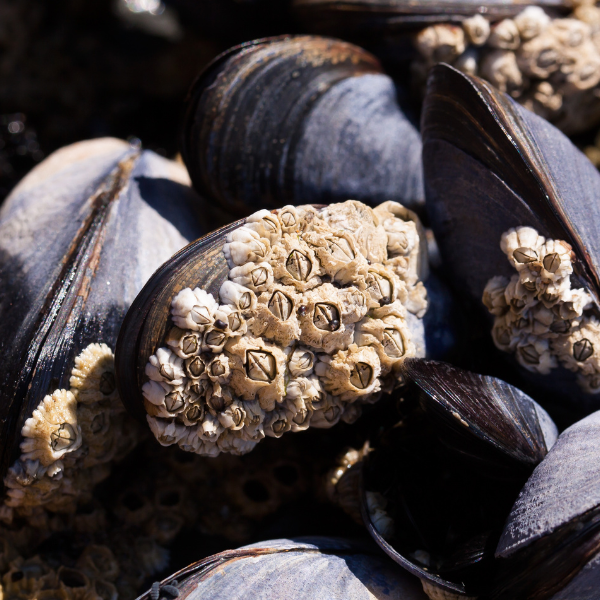
Barnacle-Giúrann
Those aren’t dragon claws—they’re gooseneck barnacles! These filter feeders are found in the rocky tide pools of Olympic Coast National Marine Sanctuary. Their shells are made up of multiple white plates that help protect them from predators and from drying out. Of the more than 1,400 species of barnacles found in the world’s waterways, the most common ones are called acorn barnacles. As anyone who’s ever maintained a vessel knows, removing barnacles requires some elbow grease (or a pressure washer). That’s why some boaters call them by their slang name: “crusty foulers.”
How do barnacles stick to the undersides of vessels, to other sea life, to each other, and to pretty much anything they come in contact with? They secrete a fast-curing cement that is among the most powerful natural glues known, with a tensile strength of 5,000 pounds per square inch and an adhesive strength of 22-60 pounds per square inch. The glue is so strong that researchers are trying to figure out how it can be used commercially.
Barnacles like places with lots of activity, like underwater volcanos and intertidal zones, where they reside on sturdy objects like rocks, pilings, and buoys. Moving objects like boat and ship hulls and whales are particularly vulnerable to the pesky critters. Large barnacle colonies cause ships to drag and burn more fuel, leading to significant economic and environmental costs. The U.S. Navy estimates that heavy barnacle growth on ships increases weight and drag by as much as 60 percent, resulting in as much as a 40 percent increase in fuel consumption!
Barnacles feed through feather-like appendages called cirri. As the cirri rapidly extend and retract through the opening at the top of the barnacle, they comb the water for microscopic organisms. They quickly withdraw into their protective shells if they sense a potential threat. Barnacles secrete hard calcium plates that completely encase them. A white cone made up of six calcium plates forms a circle around the crustacean. Four more plates form a “door” that the barnacle can open or close, depending on the tide. When the tide goes out, the barnacle closes up shop to conserve moisture. As the tide comes in, a muscle opens the door so the feathery cirri can sift for food.
